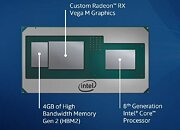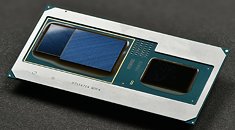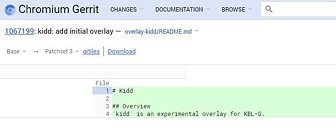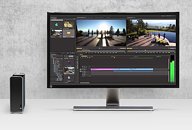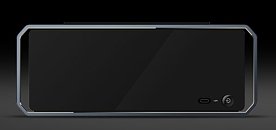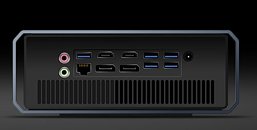
Chinese Company Revives AMD Vega GPU in a Unique NAS Motherboard
A Chinese Topton company has brought new life to the AMD Vega graphics architecture by integrating it into a Network Attached Storage (NAS) motherboard. The Topton N9 NAS motherboard features the Intel Core i7-8705G processor, a unique chip that combines Intel CPU cores with AMD's RX Vega M GL graphics. The Intel Core i7-8705G, initially released in 2018, is an unusual choice for a NAS system. This 14 nm processor features four cores, eight threads, and a boost clock of up to 4.1 GHz. What sets it apart is the integrated AMD RX Vega M GL GPU with 20 Compute Units and 4 GB of HBM2 memory.
The Topton N9 NAS motherboard is designed for the 17×17 cm ITX form factor and offers a range of features like maximum support for 64 GB of DDR4 RAM, M.2 NVMe/SATA and SATA 3.0, eight Intel i226-V controllers for 2.5 Gbit networking, USB 3.0, USB Type-C, and HDMI 2.0 connectivity. While the Intel Core i7-8705G may not be the most obvious choice for a NAS system, the Topton N9 motherboard demonstrates how this unique processor can be repurposed to provide affordable computing power. The integrated AMD RX Vega graphics offer capabilities beyond typical NAS requirements, making this motherboard suitable for various applications, such as home firewalls and routers. The collaboration between Intel and AMD in creating the Kaby Lake-G processors was a rare occurrence in the industry. The Topton N9 starts at $288.56 without a fan/cooler, and adding another $20 bumps the price to $308.46.
The Topton N9 NAS motherboard is designed for the 17×17 cm ITX form factor and offers a range of features like maximum support for 64 GB of DDR4 RAM, M.2 NVMe/SATA and SATA 3.0, eight Intel i226-V controllers for 2.5 Gbit networking, USB 3.0, USB Type-C, and HDMI 2.0 connectivity. While the Intel Core i7-8705G may not be the most obvious choice for a NAS system, the Topton N9 motherboard demonstrates how this unique processor can be repurposed to provide affordable computing power. The integrated AMD RX Vega graphics offer capabilities beyond typical NAS requirements, making this motherboard suitable for various applications, such as home firewalls and routers. The collaboration between Intel and AMD in creating the Kaby Lake-G processors was a rare occurrence in the industry. The Topton N9 starts at $288.56 without a fan/cooler, and adding another $20 bumps the price to $308.46.







